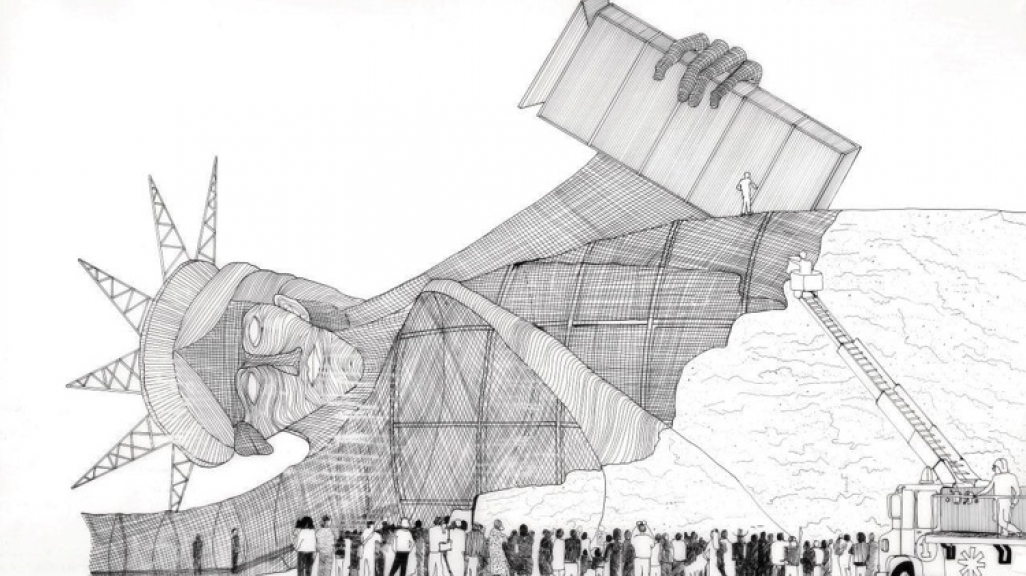Tres Perspectivas: Contemporary Art from Latin America
On view:
through
Tres Perspectivas: Contemporary Art from Latin America
Organized by the Visual Arts Department at Americas Society in collaboration with Henrique Faria Fine Art, this exhibition will be on display at Carnegie Hall.
Leandro Katz, Marta Minujín, and Luis Molina-Pantin, the artists selected for this exhibition are considered fundamental for the development of conceptualism and contemporary art in Latin America. Their work reflects the sophistication, complexity, and the cultural diversity that characterizes the visual arts of the region in the twenty-first century. Formed and educated in South America, North America, and Europe, they share an awareness for the social and material conditions that surrounds them. They also reflect on their personal experiences through an investigation of language and culture, journey and displacement, circulation and exchange. In his Lunar Alphabet Series, Leandro Katz captures the phases of the moon as a remote and universal language. By contrast, Marta Minujín’s 1,000 ears of corn, spray painted gold, serve as currency in the humorous negotiation of the external debt in Latin America, representing not only its exchange value but also its cultural heritage. Rather than a symbolic negotiation with the public, the photographs of Luis Molina-Pantin’s Royal Caribbean Cruise Line Series present an ironic view of luxurious landscapes created by man as self-contained universes. By transcending the realm of the aesthetic, these artists represent a current exploration of sociocultural issues in Latin America and beyond.
Leandro Katz
Argentinean artist Leandro Katz lived in New York between 1965 and 2006, where he led academic and creative initiatives. In his works, he researches historical, artistic, and anthropological aspects. The artist’s gelatin silver prints feature a series of trees, waterfalls, and alphabets constructed with images of the moon.
In his series of waterfall depictions, Katz attempted to capture, in sequenced shots, a small body of water measurable in human scale and size to its particular setting. The Lunar Alphabet Series is a project that began in 1976 with two films, and continued into the mid-1980s with photographs, drawings, and installations. The photographs feature phases of the moon in horizontal lines like phrases or sentences punctuated by a hyphen and/or a period, or paired with letters. The work is informed by pre-Columbian art and history, semiotics, and film. The structure of language defined by a lunar vocabulary is both familiar and unfamiliar, and alternately near and far.
Marta Minujín
Marta Minujín is a prominent voice of the Argentinean neo-avant-garde art scene in the 1960s and 70s, with an international career based on the artist’s exploration on media, performance, and participation. Her work reflects on the diverse movements specifically with new realism, pop art, and conceptual art, as well as with the investigations around performance, happenings, video-art, new technologies, mass media, and action art, among others.
In 1985, Minujín invited pop art icon, Andy Warhol, to a New York performance in which symbolically she paid off Argentina’s external debt using corn, the traditional Latin American food staple and most widely grown crop in the Americas. Surrounded by 1,000 ears of corn, spray painted gold, Warhol and Minujín performed the negotiation of the debt. After 12 photographic shots taken in Warhol’s studio, The Factory, the artists signed and distributed the individual ears of corn to the public in front of the Empire State Building.
Luis Molina-Pantin
Venezuelan artist Luis Molina-Pantin lives and works in Caracas and Milan. Through his photographs, the artist interprets the phenomenon of the cruise vacation in a sociological and anthropological sense: it is an investigation with sharp clarity, balancing irony and curiosity, pointing out, with evidence, the artificiality of the dimension in which travelers find themselves.
Through an investigation of the architecture of the ship, the decoration of the interior spaces, the facilities where passengers spend their days—the swimming pool, casino, rooms, etc.—the ship becomes a symbol of luxury and a dimension in which the "all inclusive" creates a social dynamic that distracts travelers from their true desires: ready-made solutions for artificial wants, not a true freedom, but only pre-packaged entertainment options.








